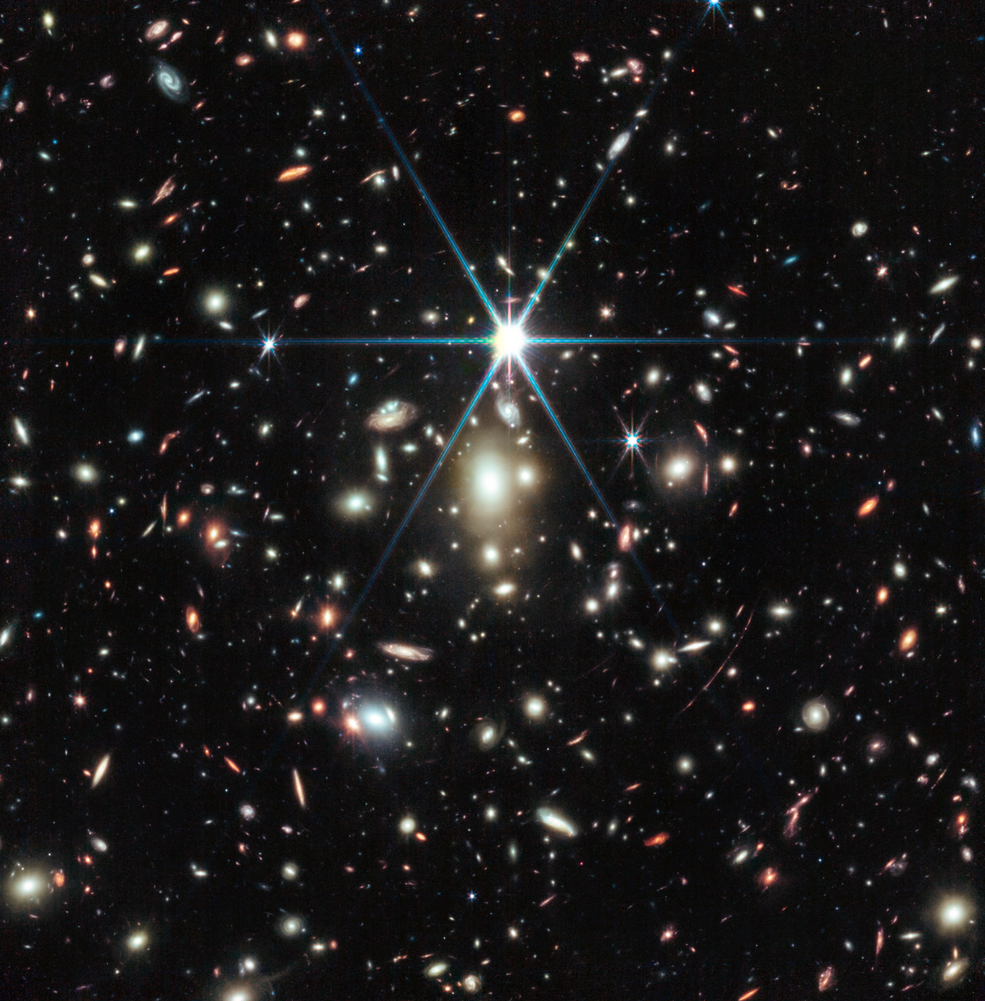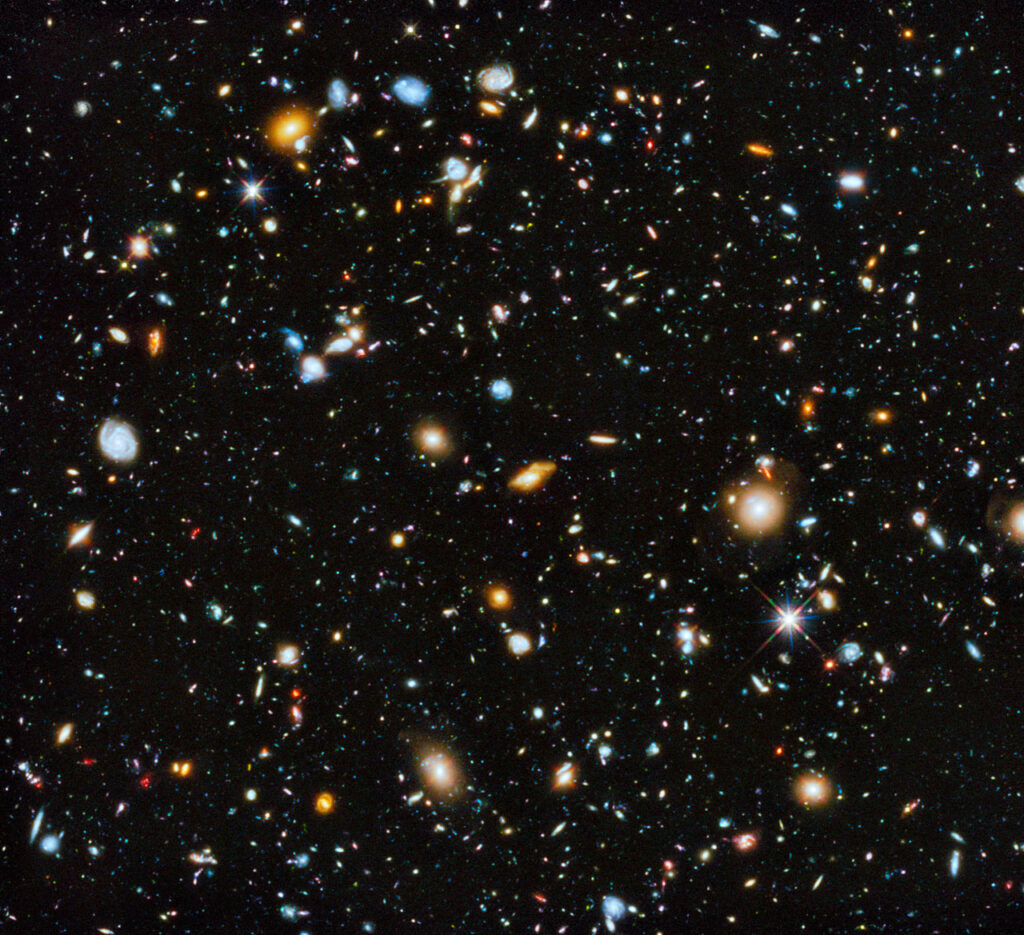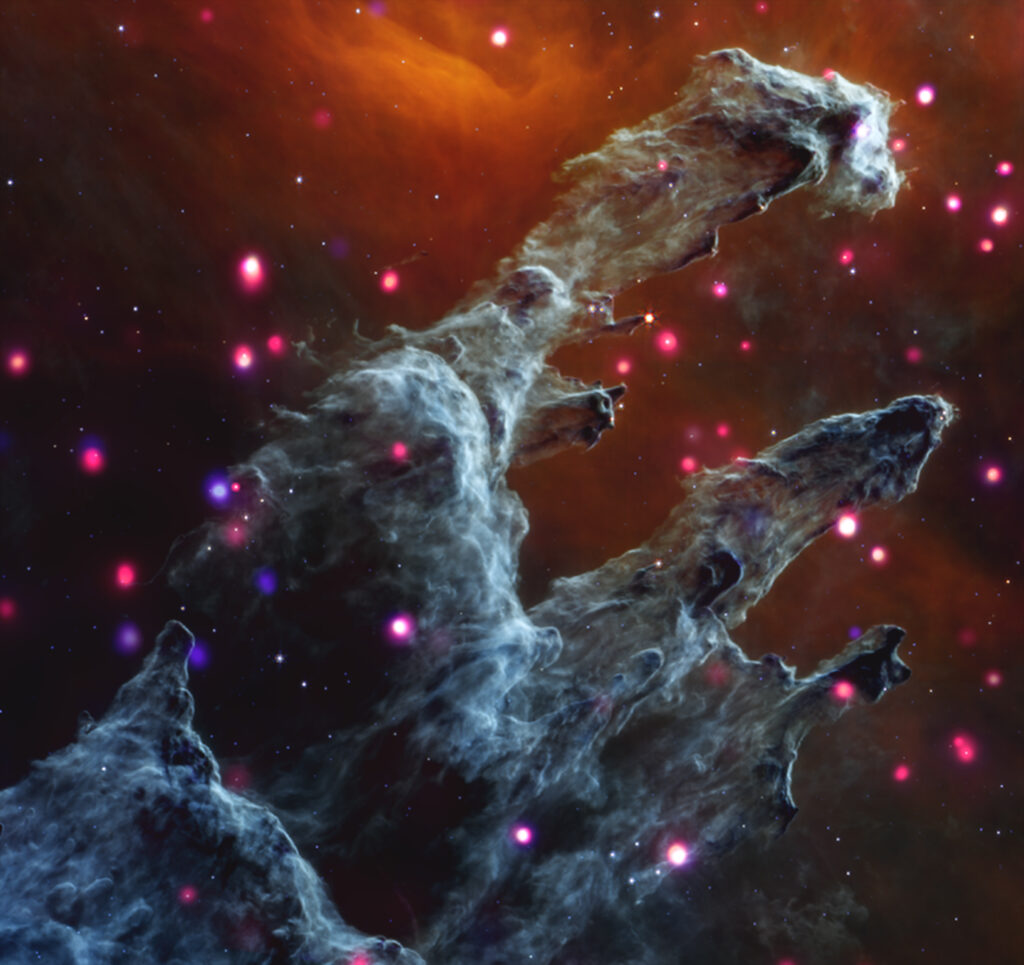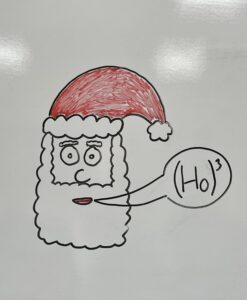The Whole of Created Things- Luke U
Discovery is sudden. Spontaneous. Erratic. Discovery in physics has the capacity to break and warp and stretch our understanding of things; to tip the balance of science; to provide new information that recontextualizes everything. It’s one of the most beautiful habits of science. As Carl Sagan writes: “science carries us towards an understanding of how the world is, not how we wish it to be”. In the field of cosmology and astrophysics this is most prevalent in a discovery, less than a century old; The discovery of the modern universe: A discovery that birthed the field of modern cosmology.
Edwin Powell Hubble discovered the current idea of the universe with a handful of equations and 2 1/2 metres worth of equipment. After receiving a degree in physics and astronomy from the University of Chicago, and in astrophysics from the University of Oxford, Hubble started work at the Mount Wilson observatory, California in 1919, now aged 30. As luck would have it, the 2 1/2 metre Hooker telescope, the largest and most advanced in the world at the time, had just begun taking regular observations. At this time, the size of the ‘universe’, a word derived from the Latin for ‘the whole of created things’ was believed to be interchangeable with the size of the Milky Way Galaxy, a region 100,000 light years in diameter. The total number of galaxies in the universe was thought to be one. Ours.
This would soon change with Hubble. Since 1912, the work of physicists had started to challenge this notion of universal centrality and the perspective of a static simple universe. Einstein’s theory of special relativity prefaced the work of Hubble by about a decade and displayed the universe is dynamic and variable behaviour in relation to gravity and space-time. At the same time that Vesto Slipher, an American astronomer working at the Lowell observatory in Arizona, observed a form of Doppler shift present in spectrographic data from distant stars. He realised that this effect must be due to the stars movement away from its original position, as its light is transmitted so the universe simply couldn’t be static at all. Sometimes all you need for discovery is a talent for cosmology and the coolest name anyone’s ever heard before.
But what’s Hubble’s role in this breakthrough? On the 5th of October 1923, Erwin Hubble takes a 45 minute exposure of the Andromeda ‘nebula’. A mysterious and common form of nebula with a characteristic spiral. When he compared this image to previous photos of Andromeda, he realised that the Andromeda nebula contained word a type of star known as a Cepheid Variable. Cepheid variables are useful in astronomy as they are stars that periodically change their brightness as they burn fuel. Using a method developed by Henrietta Swan Levitt and Annie Jump Cannon (see what I was saying about the names?) Hubble was able to calculate its distance away from earth and determined that it was 900,000 light-years away. Beyond the limits of the Galaxy and the universe. This discovery allowed humanity to step outside of the Milky Way and find that there was an expanse more varied and vast than anyone in history could fully predicted.
Hubble’s findings changed the perspective on the scale of the universe completely. In the world of physics the metal harm of the penny dropping was heard by cosmologists and astrophysicists are like on January. From January 1st 1925 Hubble publishes data on the different speeds of galaxies were receding virus based on with scientists work and new sister determined the universe is around 2 billion years old this was bold and revolutionary and wildly inaccurate.
A 1956, by refining couples equations common the universe was estimated to be 7.7 to 20 billion years old. In 2003, the methods refined again by a group of NASA to be 13.7 billion years old. Today the best estimates are around 13.82 billion years old.
The reason I find these discoveries and pressing and impactful is that even though they didn’t have saved lives or have immediate applications in society in less than 100 years the scientific thinking around the topic changed adapted. Ideas about the universe is scale and transitory nature and distant galaxies have been produced from the collaborative efforts of countless physicists.
Today we can image stars like Earendel [pictured below closed bracket From 28 billion light years away using our understanding of gravitational lensing and specialist tackling the Hubble telescope.

Image of the most distant known star. A B-Type star more than twice as hot as our sun, and roughly a million times more luminous. It is located 28 billion light years away from Earth. Captured from the JWST’s NIRCam. Credit: NASA, ESA, CSA, Dan Coe (STScI/AURA for ESA, JHU), Brian Welch (NASA-GSFC, UMD), Zolt G. Levay.
We have used the UV rays to display 10,000 galaxies in a single image raising our estimates of how many galaxies there are from one to around 165 billion since 1923.

The Hubble Ultra Deep Field 2014 image is a composite of separate exposures taken by the telescope from 2002 to 2012. The resulting image — made from 841 orbits of telescope viewing time — contains approximately 10,000 galaxies, extending back in time to within a few hundred million years of the big bang. Credit: NASA, ESA, H. Teplitz and M. Rafelski (IPAC/Caltech), A. Koekemoer (STScI), R. Windhorst (Arizona State University), and Z. Levay (STScI). In 2014, astronomers released the most colorful and comprehensive picture of the evolving universe ever captured by Hubble. The observation, called the Ultraviolet Coverage of the Hubble Ultra Deep Field, provides the missing link in star formation.
And we’ve seen galaxies and their structures and the stars contained in them, like Galaxy NGC 1672, from before when we didn’t know other galaxies existed at all.

Image of spiral galaxy NGC 1672. Credit: X-ray: Chandra: NASA/CXC/SAO, XMM: ESA/XMM-Newton; IR: JWST: NASA/ESA/CSA/STScI, Spitzer: NASA/JPL-Caltech; Optical: Hubble: NASA/ESA/STScI, ESO. Image Processing: L. Frattare, J. Major, and K. Arcand.
The data gathered since 1912 has provided more insight into the nature of space and reality than any discovery that has come before it, even relativity. Information about the structure of galaxies, time dilation, velocity of receding celestial objects, magnetic fields and event horizons in black holes, time crystals and bosons; all these ideas have been formed by the people that came before them laying the cornerstone. These ideas challenge our understanding and create something completely different and new. This is, scientifically speaking, very funky, and it points towards inconsistencies and new ideas yet to be discovered, that’s the legacy of this discovery, over time, people’s ideas have amalgamated and acted as a springboard to help others create new ideas as well. To learn and discover and challenge. To try to revel in as much knowledge as we can find that creation has to offer. And to push cosmology and astrophysics to the forefront of modern physics research. It’s an inspirational and exceptional journey of discovery. This article opened with the words of Carl Sagan, so it seems right to end with them as well:
“Somewhere, something incredible is waiting to be known”.
(This article is derived from an entry I submitted into the RCSU Science Challenge this year.)















Post Comment
You must be logged in to post a comment.